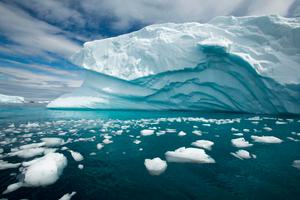In Climate
Global Warming
-
Video Contest Winner - 1st Place
The Dungeness Crab Faces Uncertain Future on West Coast
-
Video Contest Winner - Runner Up
After Denial: How People React to the Hard Reality of Climate Change
-
Climate Consequences
Abrupt Sea Level Rise Looms As Increasingly Realistic Threat
-
Rethinking Urban Landscapes To Adapt to Rising Sea Levels
Landscape architect Kristina Hill focuses on helping cities adapt to climate change, particularly sea level rise. In an interview with Yale Environment 360, she discusses the challenges, solutions, and costs of saving cities from encroaching oceans.
-
Deforestation
How Forest Loss Is Leading To a Rise in Human Disease
-
To Protect Monarch Butterfly, A Plan to Save the Sacred Firs
Mexican scientists are striving to plant oyamel fir trees at higher altitudes in an effort to save the species, as well as its fluttering iconic winter visitor — the migrating monarch butterfly — from the devastating effects of climate change.
-
As Ocean Waters Heat Up, A Quest to Create ‘Super Corals’
With the world’s coral reefs increasingly threatened by warmer and more acidic seas, scientists are selectively breeding corals to create species with the best chance to survive in the coming century and beyond. Are genetically modified corals next?
-
Frustrated Tar Sands Industry Looks for Arctic Export Route
With the Keystone XL and other pipeline projects running into stiff opposition, Alberta’s tar sands industry is facing growing pressure to find ways to get its oil to market. One option under consideration would be to ship the oil via an increasingly ice-free Arctic Ocean.
-
How Long Can Oceans Continue To Absorb Earth’s Excess Heat?
The main reason soaring greenhouse gas emissions have not caused air temperatures to rise more rapidly is that oceans have soaked up much of the heat. But new evidence suggests the oceans’ heat-buffering ability may be weakening.
-
As Himalayan Glaciers Melt, Two Towns Face the Fallout
For two towns in northern India, melting glaciers have had very different impacts — one town has benefited from flowing streams and bountiful harvests; but the other has seen its water supplies dry up and now is being forced to relocate.
-
Sustainable Agriculture
Soil as Carbon Storehouse: New Weapon in Climate Fight?
The degradation of soils from unsustainable agriculture and other development has released billions of tons of carbon into the atmosphere. But new research shows how effective land restoration could play a major role in sequestering CO2 and slowing climate change.
-
To Tackle Runoff, Cities Turn to Green Initiatives
Urban stormwater runoff is a serious problem, overloading sewage treatment plants and polluting waterways. Now, various U.S. cities are creating innovative green infrastructure — such as rain gardens and roadside plantings — that mimics the way nature collects and cleanses water.
-
Designing the Urban Landscape To Meet 21st Century Challenges
Martha Schwartz, a professor at Harvard’s Graduate School of Design, explains in a Yale Environment 360 interview how creative landscape architecture can help cities become models of sustainability in a world facing daunting environmental challenges.
-
At Edge of Peruvian Andes, Tracking Impacts of Warming
The Andes in eastern Peru, with steep slopes and remarkable biodiversity, are what one scientist calls a “perfect laboratory” for studying the effects of climate change. E360 contributor Elizabeth Kolbert trekked there with researchers seeking to determine if tree populations can move uphill fast enough to survive warming temperatures.
-
Population Boom
Cooling a Warming Planet: A Global Air Conditioning Surge
-
The World’s Tropical Forests Are Already Feeling the Heat
Much attention has been paid to how global warming is affecting the world’s polar regions and glaciers. But a leading authority on tropical forests warns that rising temperatures could have an equally profound impact on rainforests and are already taking a toll on some tropical species.
-
What’s With the Weather? Is Climate Change to Blame?
One of the thorniest questions facing climate scientists is whether human-induced climate change is leading to more heat waves, floods, and extreme weather events. Now, employing increasingly sophisticated methods of studying weather extremes, climatologists say they are closer to answering that key question.
-
After the Great Quake, Living with Earth’s Uncertainty
The Japanese earthquake and tsunami remind us that we exist in geologic time and in a world where catastrophic events beyond our predicting may occur. These events — and the growing specter of climate change — show how precariously we exist on the surface of a volatile planet.
-
Climate’s Strong Fingerprint In Global Cholera Outbreaks
For decades, deadly outbreaks of cholera were attributed to the spread of disease through poor sanitation. But recent research demonstrates how closely cholera is tied to environmental and hydrological factors and to weather patterns — all of which may lead to more frequent cholera outbreaks as the world warms.
-
Arctic Roamers: The Move of Southern Species into Far North
Grizzly bears mating with polar bears. Red foxes out-competing Arctic foxes. Exotic diseases making their way into once-isolated polar realms. These are just some of the worrisome phenomena now occurring as Arctic temperatures soar and the Arctic Ocean, a once-impermeable barrier, melts.





